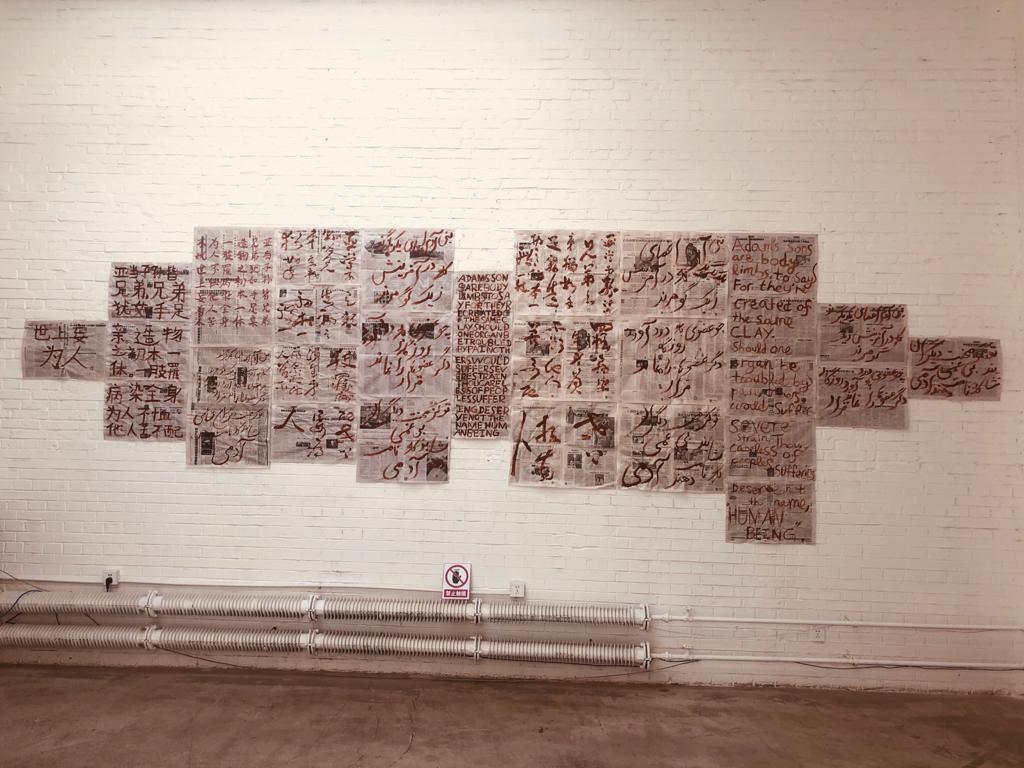HUMAN BEING II, 2019
Chinese newspapers, terracotta slip
520 x 350 cm
“Human being, 2019” is about exchange and parallel reading of cultural ideas
Mojgan Habibi experimented with original and translated text from Persian and Chinese poetry using Persian, Chinese and Latin writing during the artist in residency program at the Red Gate Beijing. She used her time in Beijing to exploring Chinese Calligraphy and ceramic as a researcher of Persian ceramic and calligraphy traditions combined and as a contemporary visual artist with an international perspective.
She was inspired by a Persian poem Bani Adam, by Saadi (ca. 1200 CE – 1291 CE). The poem describes how humans are connected to each other, like the limbs of a single body, outlining the importance of sharing, empathy and love.
The poem, written on random current Chinese newspaper broadsheet in different languages hints at the possibility of unity between all humans; the calligraphy illegible by some of the audience, requires an element of trust by the audience, and the work engages the viewer to reconcile the opposing intentions of newsprint and poetry.
|
Adam’s sons are body limbs, to say; For they’re created of the same clay. Should one organ be troubled by pain, Others would suffer severe strain. Thou, careless of people’s suffering, Deserve not the name, “human being”. |
“亚当子孙皆兄弟, 兄弟犹如手足亲。 造物之初本一体。一肢罹病染全身。 为人不恤他人苦,不配世上妄为人。” |
|
The children of Adam are limbs of each other |
可以说,亚当的孩子们是手足; 因为他们是同一种粘土捏制。 倘若一个器官隐隐作痛, 其他部分必会被疼痛吞噬。 你,弃苦难的同伴而去, 永远不配“人类”这个名字。 |

